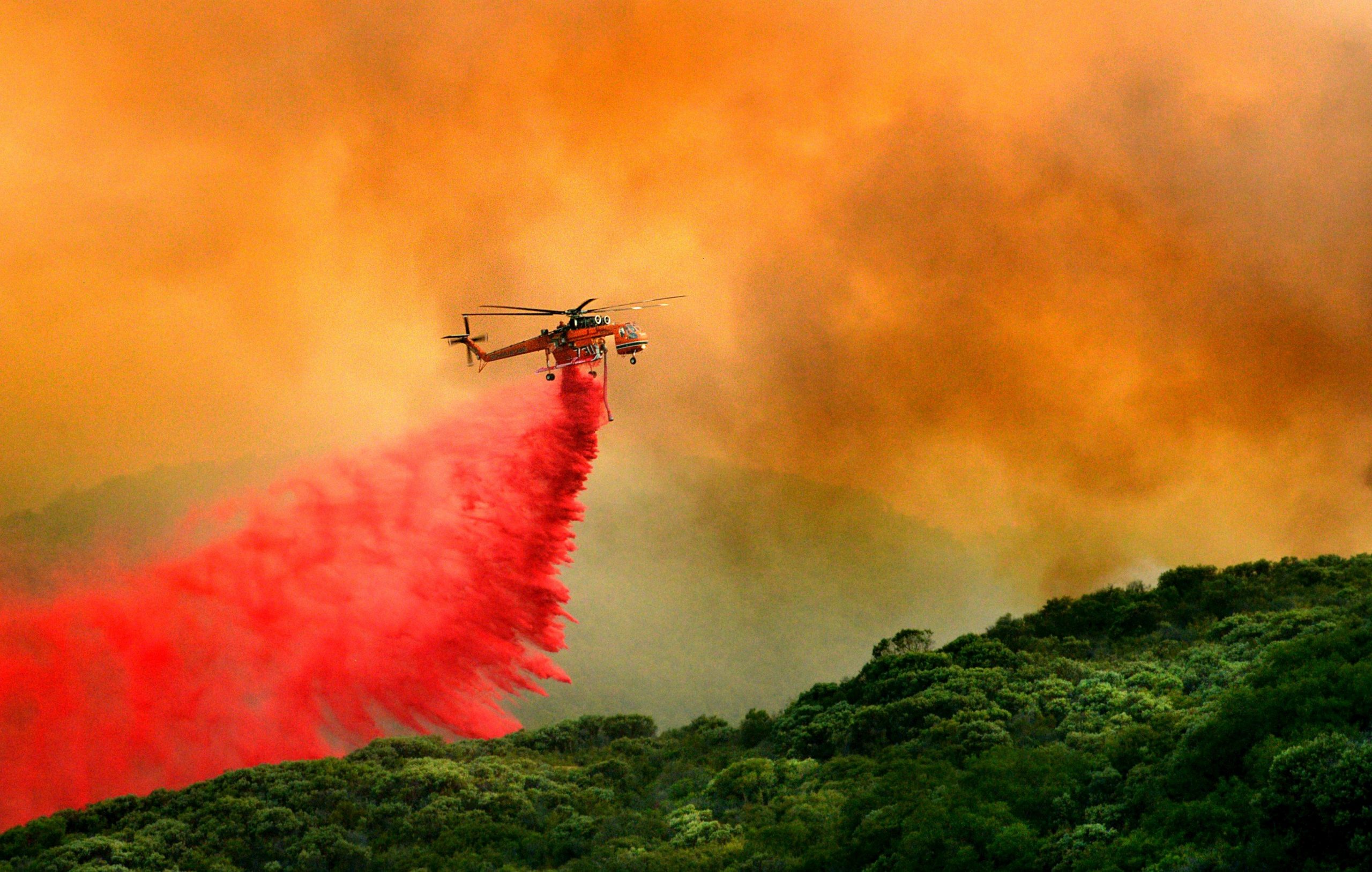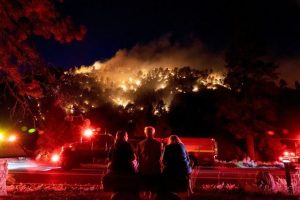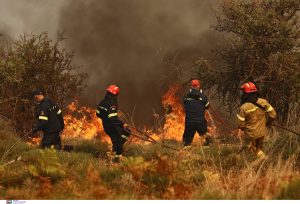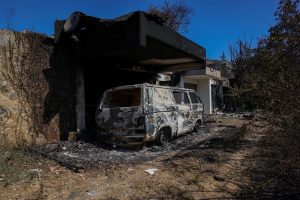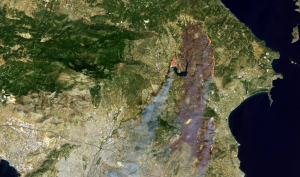In daring flyovers just above the tree line, flying firefighters are battling blazes that have burned 7.8 million acres nationally this season—more than triple last year’s acreage. They dump payloads of chemicals or water scooped up from lakes to douse flames and protect homes and buildings.
But sometimes things go wrong.
This year, at least six pilots have crashed while performing aerial maneuvers, flying through smoke or while en route on support missions.
Juliana Turchetti was flying a single-engine “Fire Boss” amphibious air tanker to fight the Horse Gulch Fire northeast of Helena, Mont., in formation with two other aircraft. After scooping up water from Hauser Reservoir, Turchetti pulled up, banked left and struck a vertical rock face along the southern shore.
She is one of at least four pilots and one mechanic to have died this year. Two pilots survived crashes.
The U.S. Forest Service, Interior Department and National Transportation Safety Board keep separate tallies of aviation accidents involving aerial firefighters. According to the NTSB, which has the most complete of the three data sets, there have been eight fatal crashes since 2020 that involve aerial firefighting.
The details of the crashes reported here are based on NTSB reports, news accounts and interviews. All of the incidents appear in the NTSB data, but not all are tagged as “firefighting” crashes.
Federal safety officials are investigating whether aircraft malfunction, human error, foul weather or some combination were responsible for the crashes.
While there is no common thread tying together this summer’s fatal accidents, the number is unusual, according to pilots and industry experts.
North America’s fire season is getting longer, hotter and drier.
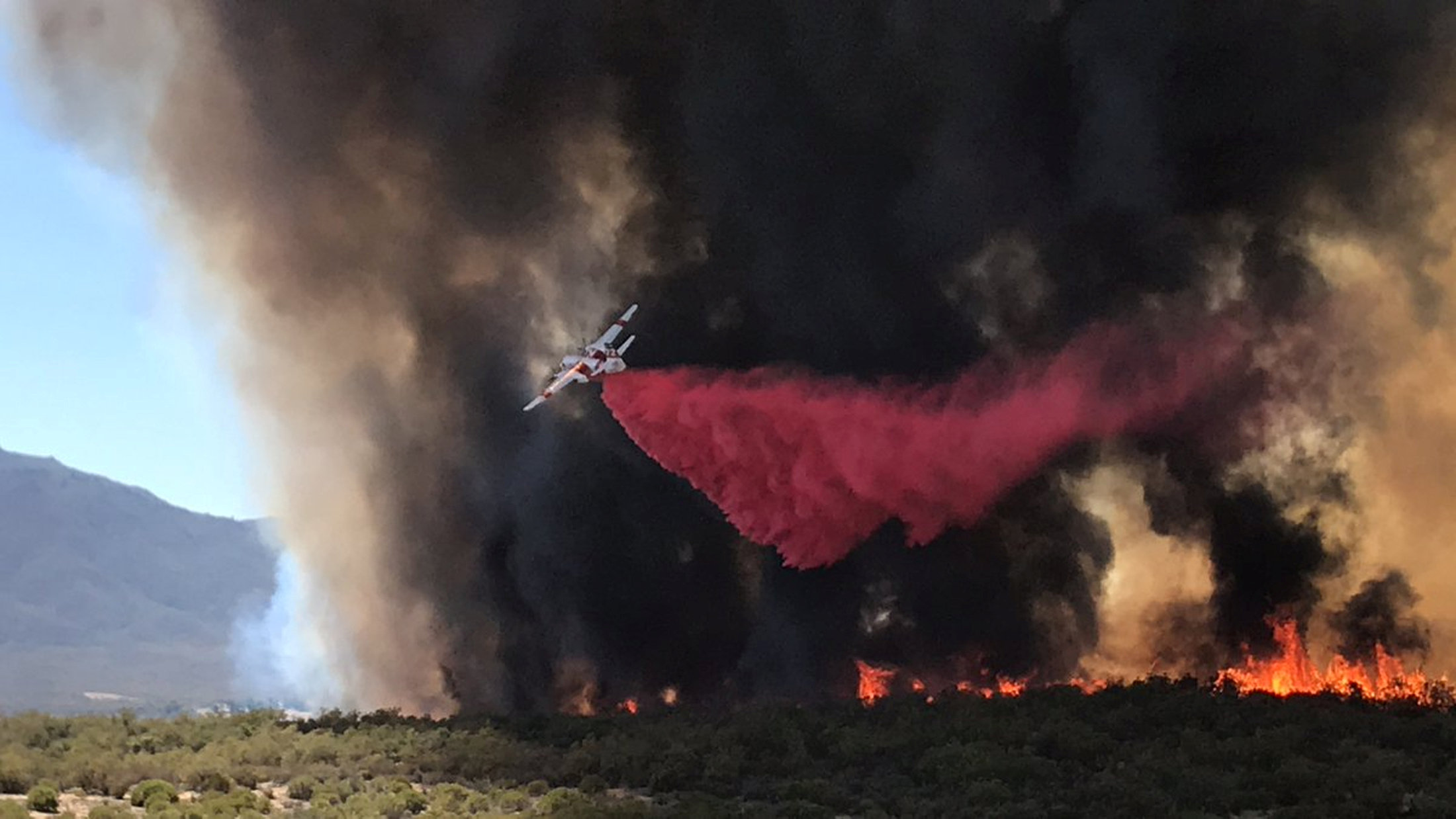
An air tanker drops retardant on wildfire called “BentonFire” near off Benton Road and Crams Corner Drive in this image on social media in Anza in Riverside County, California, U.S., July 4, 2018. Picture taken July 4, 2018. Courtesy California Department of Forestry and Fire Protection/Handout via REUTERS
Record-setting temperatures in the Southwest and Southern California in early October, and well-above normal temperatures in parts of the Mountain West and Great Plains, prompted the National Interagency Fire Center in Boise, Idaho, to raise its national alert to level 5, indicating that firefighting resources are beginning to be stretched thin. The potential for “significant wildland fires is high and expected to remain high,” according to the center. This is the latest date it has declared a level 5 alert since records began in 1990.
Over the past decade, fire suppression overall has cost the government an average of $2.9 billion a year. That figure is expected to rise to nearly $4 billion annually by 2050 because of longer wildfire seasons and more intense blazes driven in part by a warming climate, according to a March 2024 study by the Office of Management and Budget.
The U.S. Forest Service and four agencies under the Interior Department have contracted 139 airplanes and 986 helicopters to fight fires this year across the country—most owned by aerial firefighting firms. A few states, such as California, employ their own aerial firefighting departments.
Firefighting airplanes range from lumbering four-engine C-130s that can drop 4,000 gallons of retardant to nimble single-engine air tankers that can quickly unload 800 gallons of water.
The pilots can quickly put out small fires in remote areas that ground crews can’t reach before they get too big. They also work directly with firefighters on the ground by dropping water or retardant to keep a fire from spreading. That gives crews more time to clear brush ahead of a fire and eventually contain it.
Unlike on flights when a pilot can rely on autopilot controls, maneuvering an aircraft around a wildfire requires constant attention to maintain a safe altitude, fly a prescribed course and then drop water or chemical retardants in just the right location. The aircraft often fly in tightly choreographed formations in which several planes or helicopters drop their loads one at a time directly on a fire or around buildings.
A native of Brazil, Turchetti, 45 years old, had 20 years of flying experience and had been working as a crop-dusting pilot while also running an aviation-themed coffee shop in Springfield, Ill. In April, Turchetti went west to work full time as a firefighting and agricultural pilot. She was hired by Dauntless Air , an aerial firefighting firm with operations throughout the Western U.S. She crashed three months later, on July 10.
“Everybody loved her,” said Jesse Weaver , chief pilot for Dauntless. “She was very enthusiastic and proud to do this job. She was new at it. That’s the sad part. It was only her third fire.”
Turchetti had passed federal training requirements and Dauntless’s own training program, Weaver said. In 2022, Turchetti told a local public-radio interviewer in Illinois that she had always dreamed of being a pilot. “I grew up with that passion. It was almost like a calling.”
Other pilots say their love of flying outweighs the risks involved in firefighting from the air.
“It’s always a challenge,” said Joel Hampton , veteran pilot for CO Fire , a Colorado-based firm. “You mitigate the risk by making sure you’re briefed, you’re trained and you’re always looking for an out if something goes bad.”
Firefighting pilots report close calls every year, from avoiding transmission lines and other pilots on the same wildfire mission to dodging a growing number of drones flown by private operators filming wildfires. Last year, aerial firefighting flights were shut down 10 times because of drone interference, according to the National Interagency Fire Center.
Hampton, 55, flew A-10 aircraft for 21 years in the U.S. Air Force before retiring and switching to firefighting eight years ago. When he began fighting fires, he said he received a few tips on how best to handle the specialized firefighting aircraft from Jim Maxwell , a 73-year-old pilot. Maxwell was among the pilots who died this year.
“He taught me a lot when I first started,” Hampton said.
Maxwell was part of a three-plane convoy headed to a forest fire on July 25 when they ran into wildfire smoke near Izee, Ore., and his single-engine air tanker struck a hillside. He had more than 50 years of experience as a pilot.
In addition to Turchetti and Maxwell, a pilot flying an air tanker from a mission in Texas to another in Oregon died in a crash near Capitan, N.M., on June 21, according to the NTSB. A pilot and mechanic en route to repair a firefighting helicopter died when their single-engine Cessna crashed near Kneeland Airport in Humboldt County, Calif., on July 23.
Two other pilots survived crashes this year. One was scooping water from a Texas lake and lost control after hitting a boat wake on July 4. Another, a helicopter pilot, crashed on July 11 while fighting a wildfire in Idaho’s Sawtooth National Forest.
Industry officials said they are working with aviation companies and federal safety experts to maintain training standards as the demand increases for firefighting pilots and aircraft.
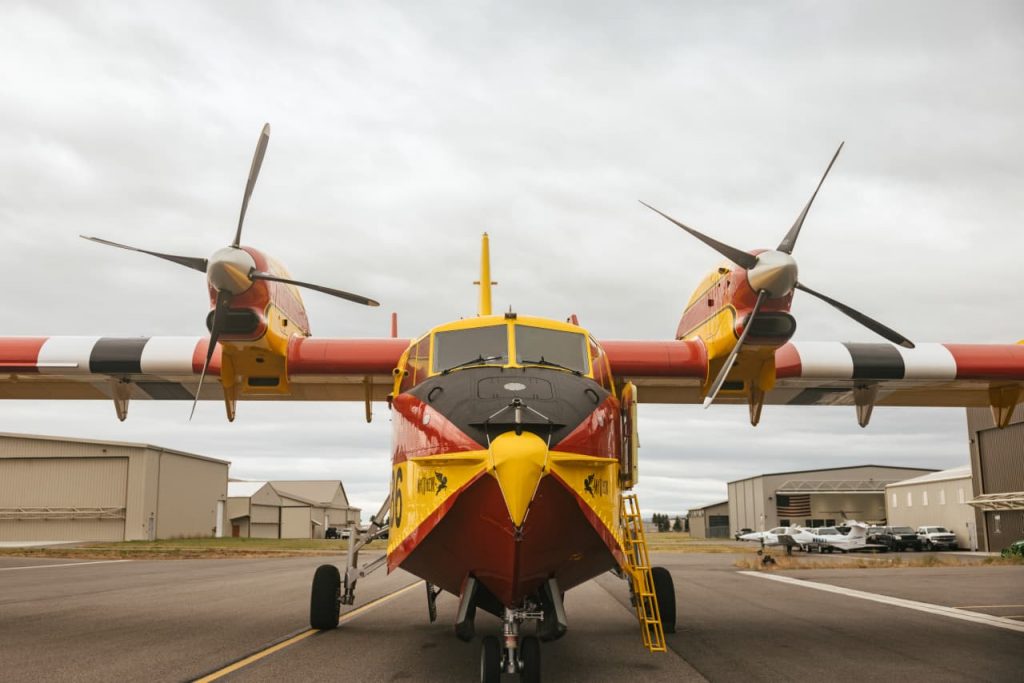
An aircraft that can scoop up water to drop on fires. Photo: Angela Owens/WSJ.
“We are trying to find some commonalities within those incidents and developing some corrective action,” said Paul Petersen , executive director of the United Aerial Firefighters Association, an industry group based in Washington, D.C., and a former wildland firefighter incident commander.
Next year, that will include a real-world exercise involving several companies joining forces to attack a fire with various kinds of aircraft. “We are trying to mimic the flight environment that pilots will see in the fire environment,” Petersen said.
Each company conducts its own training program, but their pilots come together to fight a single fire. This training would help the companies join forces, Petersen said.
Despite the potential dangers, Hampton said seeing the results on the ground after he protects a cluster of homes with a ring of red fire retardant gives him a genuine sense of satisfaction.
“When you’re flying back through there the next day, and you see the whole world is black but that ranch house has still got the swing set in the backyard and it’s green and the trees are there and it’s got my red ring around it,” Hampton said, “it’s pretty exciting to see that we made a difference.”
Write to Eric Niiler at eric.niiler@wsj.com

